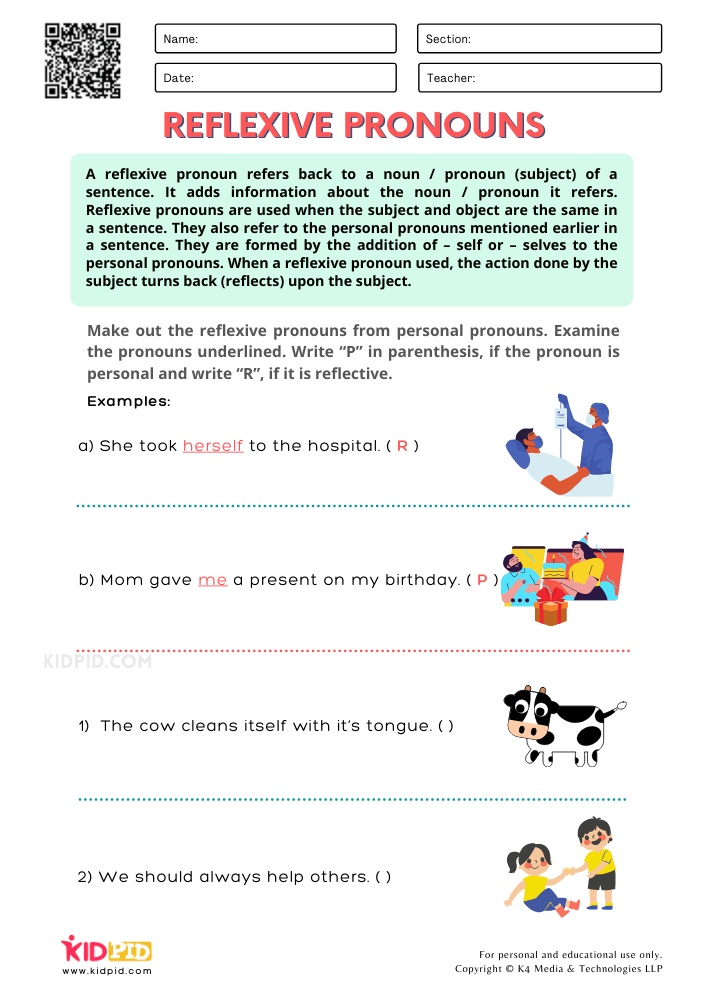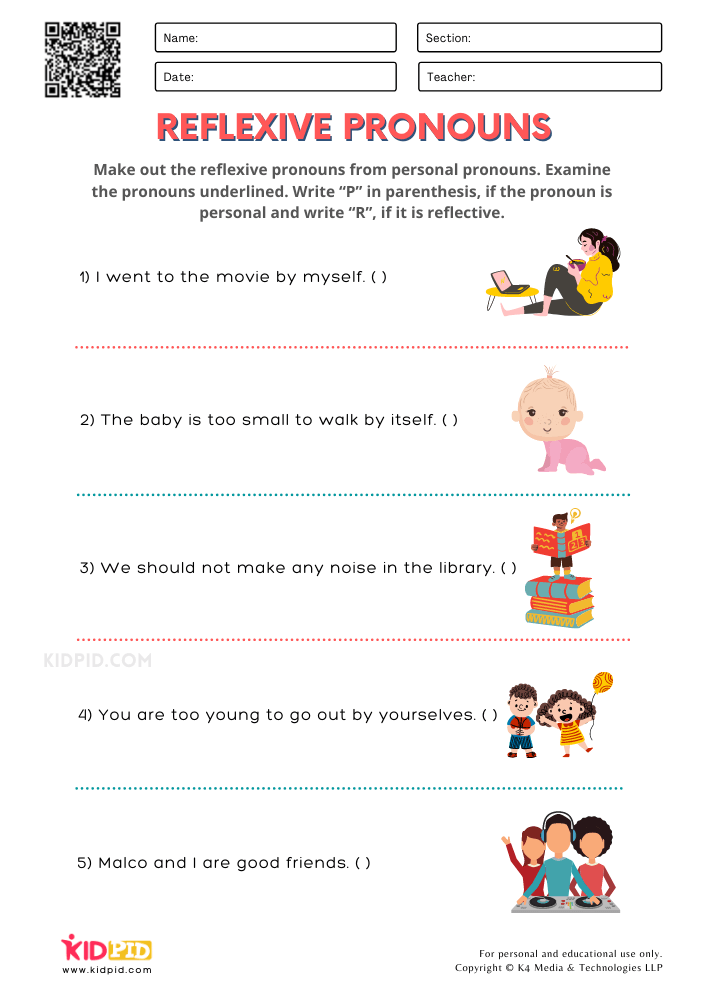Reflexive Possessive Pronouns Worksheets for Grade 2

Pronouns are defined as the words that are used in place of nouns. Such words replace nouns in sentences. When we write, we use several nouns such as names of people in sentences. It is not very efficient to keep repeating the name each time we need to refer to that person.
Moreover, doing so makes it repetitive, inefficient and takes away from the beauty of the language. Pronouns are used to counter such cases. Depending upon the noun being replaced and its function, pronouns replace the nouns in the sentence. There are a few different types of pronouns. It can be personal, possessive, definite, indefinite, reflexive, and so on. The worksheet brings exercises for young kids to learn about reflexive pronouns.
Reflexive pronouns are pronouns that refer back to a noun in a sentence. These add information about the noun it refers to. Reflexive pronouns are used when subjects and objects are in the same sentences. Given in the first worksheet is a list of the personal and reflexive pronouns.
Reflexive Possessive Pronouns Practice Worksheets
In the first exercise, second graders have to draw a line below the reflexive pronoun connecting the related personal pronouns of each reflexive pronoun with an arrow in each of the given sentences. The first question in the sheet is solved for their ease.

In the second sheet, students need to underline the reflexive pronouns from the given sentences and connect the related personal pronoun with an arrow.

 The more we practice, the more we understand. To allow ample practice the fourth and fifth sheet presents another exercise for kids to recognize reflexive pronouns. Here, there are two groups: group ‘1’ and group ‘2’. They have to match the relevant reflexive pronouns with the help of an arrow. The first one is done for their help.
The more we practice, the more we understand. To allow ample practice the fourth and fifth sheet presents another exercise for kids to recognize reflexive pronouns. Here, there are two groups: group ‘1’ and group ‘2’. They have to match the relevant reflexive pronouns with the help of an arrow. The first one is done for their help.


The last three sheets in the worksheet consist of yet another different exercise for kids to practice. Here students have to make out the reflexive pronouns from personal pronouns. They need to examine the underlined pronouns and check whether the underlined pronoun is personal or reflexive. If it is a personal pronoun, they need to write P in the parenthesis and if the underlined pronoun is reflexive, they have to write R as shown in the example below.



It is important for kids to learn the eight different parts of speech as these dictate several rules in the English language. Pronouns are one of the eight parts of speech. Download the worksheet to teach kids about reflexive pronouns. Get started now!






Responses